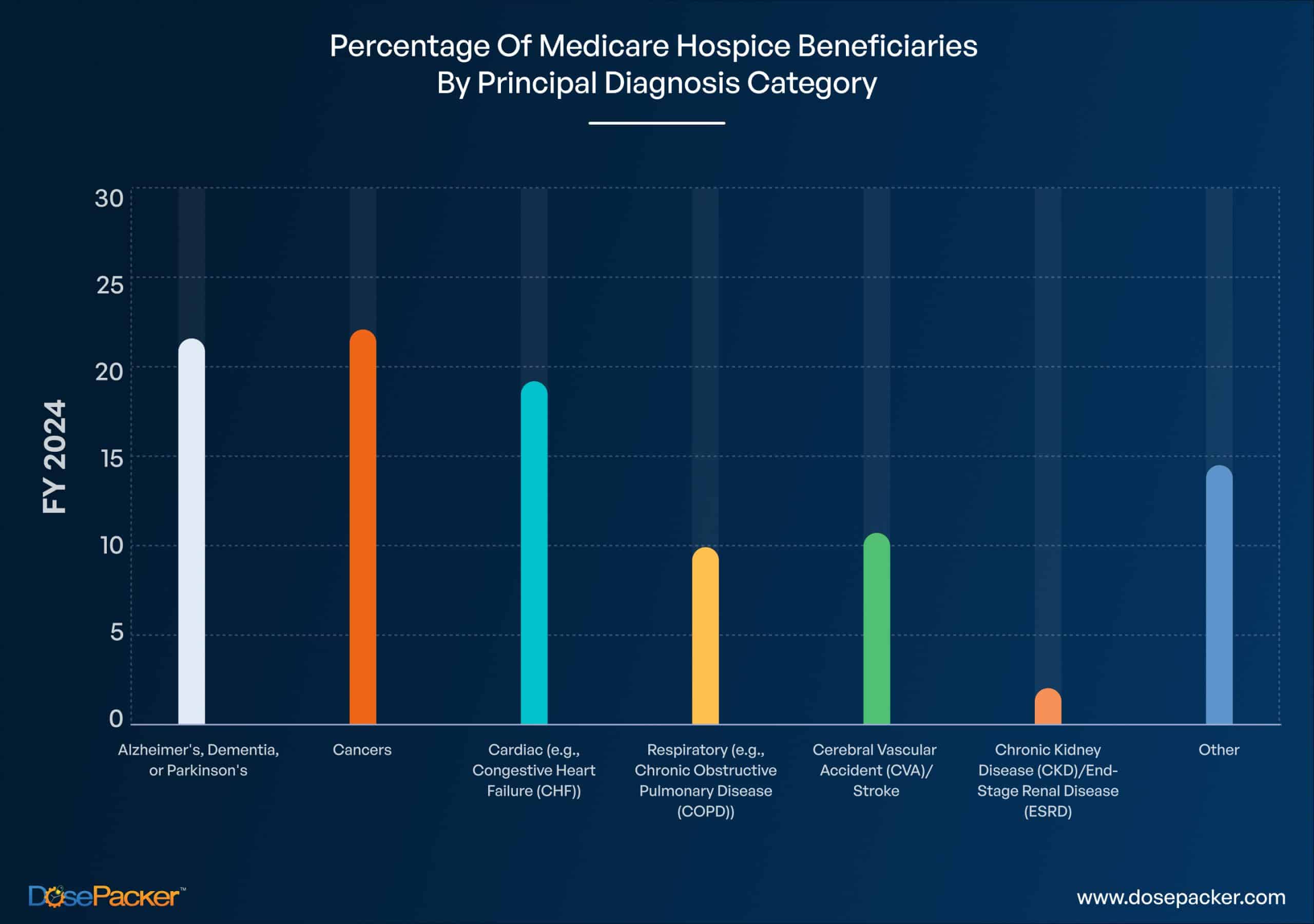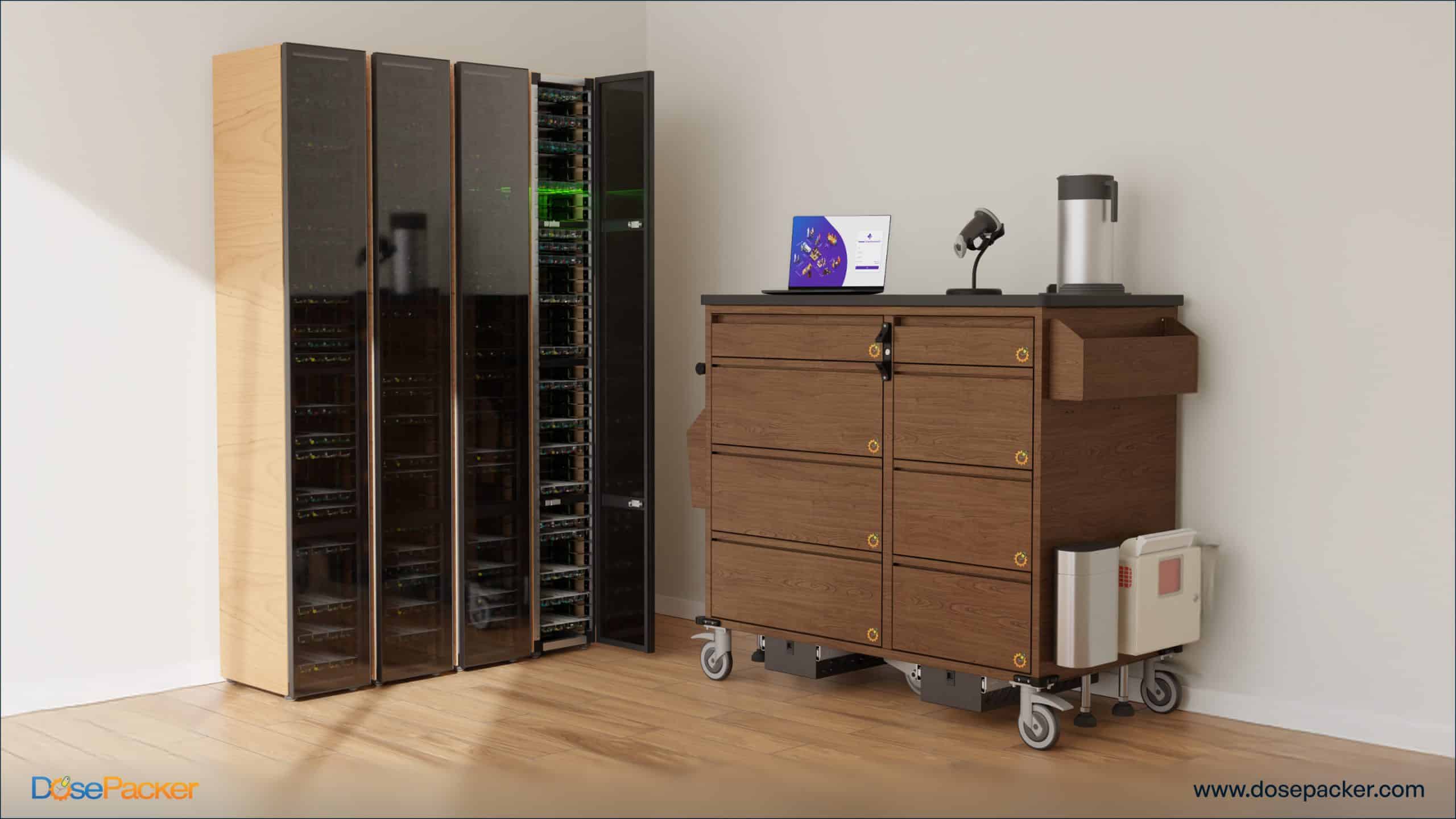- Quick Comparison: Assisted Living vs Hospice Care
- What Is Assisted Living? Understanding Long-Term Residential Care
- What Is Hospice Care? Understanding End-of-Life Support
- Can You Receive Hospice Care In An Assisted Living Facility?
- Medication Management Across Care Settings
- How To Decide Between Assisted Living And Hospice
- Making An Informed Choice For Your Loved One
Unlock the latest in medication management technology and grow your care community with us.

Did you know?
There are 32,231 residential care communities in the US! Choosing between senior care options for a loved one is one of the most challenging decisions families face.
Understanding the difference between assisted living and hospice care is essential for making informed choices that honor your loved one’s needs and wishes. While both provide crucial support during vulnerable times, they serve fundamentally different purposes in the continuum of care.
This guide examines the key distinctions between assisted living facilities and hospice care facilities. This includes eligibility criteria, services offered, costs, and guidance on determining which option is most suitable for your individual situation.
Whether your loved one requires long-term support for chronic conditions or compassionate end-of-life care, DosePacker’s innovative medication management solutions are the standard solution that powers both these care communities.
Quick Comparison: Assisted Living vs Hospice Care
Before diving deeper, here’s a quick overview of how assisted living and hospice differ:
Primary Purpose
Assisted living facilities support independence for seniors with chronic conditions who need help with activities of daily living. Hospice care provides comfort-focused care for individuals with terminal illness and a prognosis of six months or less.
Medical Focus
Assisted living emphasizes health maintenance and coordination with outside healthcare providers. Hospice focuses on symptom management and pain relief rather than curative treatment.
Duration of Care
Assisted living is a long-term care solution that lasts from months to years. Hospice care is typically short-term, with most patients receiving care for under six months; however, recertification is possible if eligibility continues.
Cost and Coverage
Assisted living costs average $4,000 to $6,000 per month and are primarily covered by private pay, with limited Medicaid coverage available in some states. Medicare does not cover assisted living room and board. Hospice care is fully covered by Medicare, Medicaid, and most private insurance, with no out-of-pocket costs for hospice services.
Location Options
Assisted living occurs in residential care facilities designed as senior living communities. Hospice can be provided at home, in assisted living facilities, nursing homes, hospice centers, or hospitals.
What Is Assisted Living? Understanding Long-Term Residential Care
Assisted living provides a residential care option for seniors who require assistance with daily tasks while maintaining as much independence as possible. These communities bridge the gap between independent living and skilled nursing facilities, providing personal care services in a supportive environment.
Services And Support In Assisted Living Facilities
Assisted living communities provide comprehensive support while encouraging independence. Services typically include assistance with activities of daily living such as bathing, dressing, grooming, and eating.
Staff members also assist with medication reminders and administration, ensuring that residents take their prescribed medications at the scheduled times. Organized medication management solutions, such as DosePacker, can be particularly valuable in assisted living settings, helping both residents and staff manage multiple medications safely.
Additional services include prepared meals, housekeeping, laundry, and transportation to medical appointments. Most communities offer social activities, wellness programs, and opportunities for residents to engage with one another. Staff availability 24/7 provides peace of mind, though assisted living does not include skilled nursing care.
Paying For Assisted Living
Understanding the financial aspects is crucial when considering assisted living. Average costs range from $1,500 to $4,000 per month, depending on location and level of service. Medicare does not cover assisted living expenses, but some states offer Medicaid waiver programs. Veterans may qualify for Aid and Attendance benefits, and long-term care insurance may help offset costs. Most families use private pay options.
What Is Hospice Care? Understanding End-of-Life Support
Hospice care represents a compassionate approach to end-of-life support for individuals with terminal illness. Unlike assisted living’s focus on maintaining independence, hospice prioritizes comfort, dignity, and quality of life when curative treatment is no longer beneficial or desired.
Comprehensive Hospice Services
Hospice provides holistic care through an interdisciplinary team including hospice physicians, registered nurses, social workers, chaplains, and trained volunteers. Medical services focus on pain management and symptom management to ensure comfort. The hospice team provides medications, medical equipment, and supplies related to the terminal condition.
Beyond medical care, hospice offers emotional and spiritual support for both patients and families. Counseling services help families navigate difficult decisions and process grief. Respite care gives family caregivers necessary breaks, while bereavement services continue for months after a loved one’s death.
Hospice Eligibility And Qualifying Conditions
To qualify for hospice care, patients must have a terminal diagnosis with a life expectancy of six months or less if the disease follows its typical course. Two physicians must certify this prognosis. Importantly, patients must choose comfort care over curative treatment, though this doesn’t mean giving up; it means shifting focus to quality of life.
Common qualifying conditions include Alzheimer’s, advanced cancer, end-stage heart disease, COPD, kidney failure, and liver disease. If a patient lives beyond six months while still meeting eligibility criteria, hospice care can continue through recertification.

Can You Receive Hospice Care In An Assisted Living Facility?
Yes, and this is an important option many families don’t realize exists. Residents of assisted living facilities can enroll in hospice care while remaining in their familiar environment. This concurrent care arrangement combines the best of both services.
The assisted living facility continues to provide room, board, personal care, and custodial services. Meanwhile, the hospice agency provides all medical care related to the terminal condition, including medications, equipment, symptom management, and the full support of the hospice team. Care coordination between facility staff and the hospice team ensures seamless, comprehensive support.
This arrangement allows seniors to remain in a familiar environment with established relationships during a vulnerable time, while receiving specialized end-of-life care from hospice professionals.
Medication Management Across Care Settings
Proper medication management is crucial in both assisted living and hospice settings, although the approaches differ significantly.
In assisted living, staff members provide medication reminders and may administer medications in accordance with state regulations. Residents managing multiple prescriptions for chronic conditions benefit from organized systems that prevent errors and ensure timely medication administration. Pre-sorted medication compliance packs, such as DosePack, help ensure the proper medication is taken at the right time, supporting both independence and safety.
Hospice medication management focuses on comfort medications, pain relievers, anti-anxiety medications, and symptom control. The hospice nurse oversees the medication plan, often simplifying regimens by discontinuing non-essential medications. For family caregivers managing hospice medications at home, medication reminder solutions provide confidence and reduce stress during an emotionally difficult time.
How To Decide Between Assisted Living And Hospice
Making the correct choice depends on understanding your loved one’s current medical condition and care needs. Begin by consulting with healthcare providers to discuss the prognosis and remember to consider your loved one’s advance directives and stated preferences.
Choose assisted living when:
- Daily tasks have become difficult, but the senior is generally stable
- Chronic conditions require medication management and daily support
- Social isolation is affecting well-being
- Safety concerns exist at home, such as fall risks
- Family caregivers feel overwhelmed by daily care demands
Choose hospice when:
- A physician confirms terminal illness with a six-month prognosis
- Curative treatments are no longer working or causing more harm than benefit
- The focus has shifted to comfort and quality of life
- Frequent hospitalizations occur for symptom management
- The patient and family want to focus on meaningful time together
Understanding Palliative Care
It’s worth noting that palliative care offers a middle ground. Unlike hospice, palliative care can occur alongside curative treatment without requiring a six-month prognosis. It focuses on symptom management and quality of life for individuals with severe illnesses and is covered by Medicare and most insurance plans. Some patients receive palliative care in assisted living before eventually transitioning to hospice.
Making An Informed Choice For Your Loved One

The primary difference between assisted living and hospice care lies in their respective care goals and the medical needs they address. These options aren’t mutually exclusive; hospice care can be provided within assisted living facilities when appropriate. The key is understanding your loved one’s current condition, prognosis, and what will give the best quality of life.
Consult with healthcare providers and discuss preferences with your loved one. Remember that care decisions can evolve as needs change. Both assisted living and hospice play vital roles in ensuring seniors receive appropriate, compassionate care.
Whether your loved one is thriving in an assisted living community or receiving comfort-focused hospice care, proper medication management remains essential. DosePacker’s advanced medication management technology helps families and caregivers ensure medications are taken safely and on schedule, reducing stress during these critical care journeys.
































